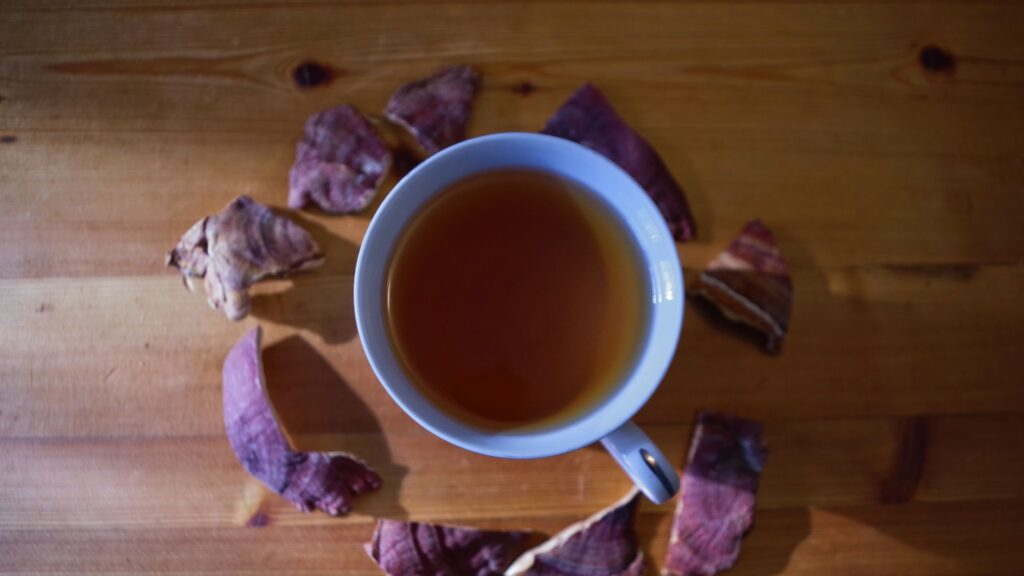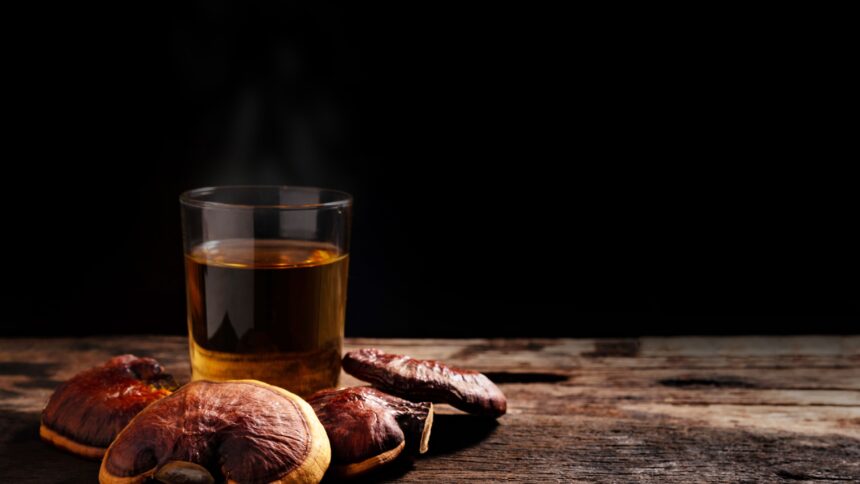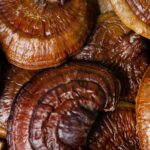How to make reishi tea is a question that has intrigued many health enthusiasts and tea lovers alike. Known for its remarkable health benefits and deep, earthy flavor, reishi tea is made from the reishi mushroom (Ganoderma lucidum), which has been revered in traditional Chinese medicine for centuries. This guide will walk you through everything you need to know about reishi tea, from its origins and benefits to a step-by-step process on how to make reishi tea at home.
What is Reishi Tea?
Reishi tea is an herbal beverage made from the reishi mushroom, an adaptogen known for its immune-boosting properties. The reishi mushroom, also known as Lingzhi, has a bitter taste and is often consumed in tea form to harness its medicinal properties. The tea is typically brewed by simmering dried or fresh reishi mushrooms in water, resulting in a dark, slightly bitter drink.
Health Benefits of Reishi Tea
Before diving into how to make reishi tea, it’s essential to understand why you might want to incorporate it into your diet. The reishi mushroom is packed with bioactive compounds that offer various health benefits:
- Immune System Support: Reishi mushrooms are rich in polysaccharides, which are known to boost the immune system by enhancing the activity of white blood cells.
- Anti-Inflammatory Properties: The triterpenoids found in reishi mushrooms have potent anti-inflammatory effects, which can help in reducing inflammation throughout the body.
- Stress Reduction: As an adaptogen, reishi helps the body manage stress by supporting adrenal function and balancing cortisol levels.
- Liver Health: Reishi mushrooms are believed to promote liver detoxification and support overall liver health.
- Sleep Aid: Regular consumption of reishi tea can improve sleep quality and help combat insomnia.
How to Make Reishi Tea: Ingredients and Preparation
Now that we’ve covered the basics, let’s get into how to make reishi tea. Here’s a simple recipe to get you started.
Ingredients
- 2-3 slices of dried reishi mushroom (or 1-2 fresh reishi mushrooms)
- 4 cups of water
- Optional: honey, lemon, or ginger for flavor
Step-by-Step Instructions
- Prepare the Reishi Mushrooms: If you’re using dried reishi mushrooms, rinse them under cold water to remove any dust. For fresh mushrooms, slice them into thin pieces to increase surface area.
- Boil the Water: In a medium-sized pot, bring 4 cups of water to a boil.
- Simmer the Mushrooms: Add the reishi mushroom slices to the boiling water. Reduce the heat to low and let it simmer for at least 30 minutes. For a stronger tea, you can simmer for up to 2 hours.
- Strain the Tea: After simmering, strain the liquid using a fine mesh strainer or cheesecloth to remove the mushroom pieces.
- Add Flavor (Optional): Reishi tea can be quite bitter. To improve the taste, you can add honey, lemon, or ginger.
- Serve and Enjoy: Pour the tea into a cup and enjoy it hot or let it cool and serve over ice.
Tips for Making the Perfect Reishi Tea
Choose Quality Mushrooms
When learning how to make reishi tea, the quality of your mushrooms is crucial. Look for organic, high-quality reishi mushrooms from reputable sources. Fresh mushrooms are preferable, but dried slices or reishi powder can also be used.
Experiment with Brewing Time
The longer you simmer the reishi mushrooms, the stronger the tea will be. If you’re new to reishi tea, start with a shorter brewing time and gradually increase it as you get used to the taste.
Enhance the Flavor
Reishi tea’s bitterness can be off-putting for some. Experiment with natural sweeteners like honey or stevia, or add a slice of lemon or ginger to balance the flavor.
Variations of Reishi Tea
Once you master the basic method of making reishi tea, you can try different variations to keep things interesting.
Reishi and Green Tea
Combine the benefits of reishi with the antioxidants in green tea. Brew your reishi tea as usual and steep a green tea bag in the hot reishi tea for 3-5 minutes.
Reishi Chai
For a spiced version, add chai spices such as cinnamon, cardamom, cloves, and black pepper to the simmering water along with the reishi mushrooms. Sweeten with honey or maple syrup for a delightful twist.
Reishi Latte
Create a creamy reishi latte by adding your favorite milk (dairy or plant-based) to reishi tea. Heat the milk separately and froth it before mixing
it with the brewed reishi tea. You can sweeten it with a bit of honey or agave syrup and sprinkle some cinnamon on top for a comforting, health-boosting beverage.
Storing and Using Reishi Tea
Storing Reishi Mushrooms
If you’re using dried reishi mushrooms, store them in an airtight container in a cool, dark place. Fresh reishi mushrooms should be refrigerated and used within a week. You can also freeze both fresh and dried mushrooms to extend their shelf life.
Storing Reishi Tea
Once you’ve brewed your reishi tea, it can be stored in the refrigerator for up to a week. Store it in a glass jar or bottle to maintain its flavor and potency. Reheat it gently on the stove or enjoy it cold.
Potential Side Effects and Precautions
While reishi tea is generally safe for most people, it’s important to be aware of potential side effects and precautions:
- Allergic Reactions: Some individuals might be allergic to reishi mushrooms. If you experience any allergic symptoms such as itching, rash, or difficulty breathing, stop consuming the tea and seek medical advice.
- Digestive Issues: Consuming large amounts of reishi tea can cause digestive upset, including stomach cramps, diarrhea, or nausea. Start with small amounts and increase gradually.
- Medication Interactions: Reishi mushrooms can interact with certain medications, especially blood thinners and immunosuppressants. If you’re taking any medication, consult your healthcare provider before adding reishi tea to your diet.
- Pregnancy and Breastfeeding: There is limited research on the safety of reishi mushrooms during pregnancy and breastfeeding. It’s best to avoid reishi tea during these times unless advised otherwise by a healthcare professional.
The History and Cultural Significance of Reishi Mushrooms

Reishi tea also involves appreciating the cultural heritage of the reishi mushroom. For thousands of years, reishi mushrooms have held a prestigious place in Chinese medicine and culture. Often referred to as the “Mushroom of Immortality,” reishi has been used to promote longevity, vitality, and overall wellness.
Traditional Chinese Medicine (TCM)
In Traditional Chinese Medicine, reishi mushrooms are classified as a superior herb, meaning they can be taken continuously without causing harm. TCM practitioners believe that reishi supports the body’s natural healing processes and helps restore balance and harmony.
Modern Research
Modern scientific research has begun to validate many of the health claims associated with reishi mushrooms. Studies have demonstrated their immunomodulatory, anti-inflammatory, and antioxidant properties, making reishi a valuable addition to contemporary wellness practices.
Conclusion
Learning how to make reishi tea is a wonderful way to incorporate the ancient wisdom of traditional medicine into your modern lifestyle. This earthy, slightly bitter tea offers a range of health benefits, from boosting your immune system to reducing stress and improving sleep. By following the steps outlined in this guide, you can easily prepare reishi tea at home and experiment with different variations to suit your taste.
Whether you’re a seasoned herbal tea drinker or new to the world of medicinal mushrooms, reishi tea is a simple and effective way to enhance your wellness routine. Remember to source high-quality reishi mushrooms, experiment with brewing times, and adjust the flavor to your liking. With these tips, you’ll be well on your way to enjoying the many benefits of reishi tea.




